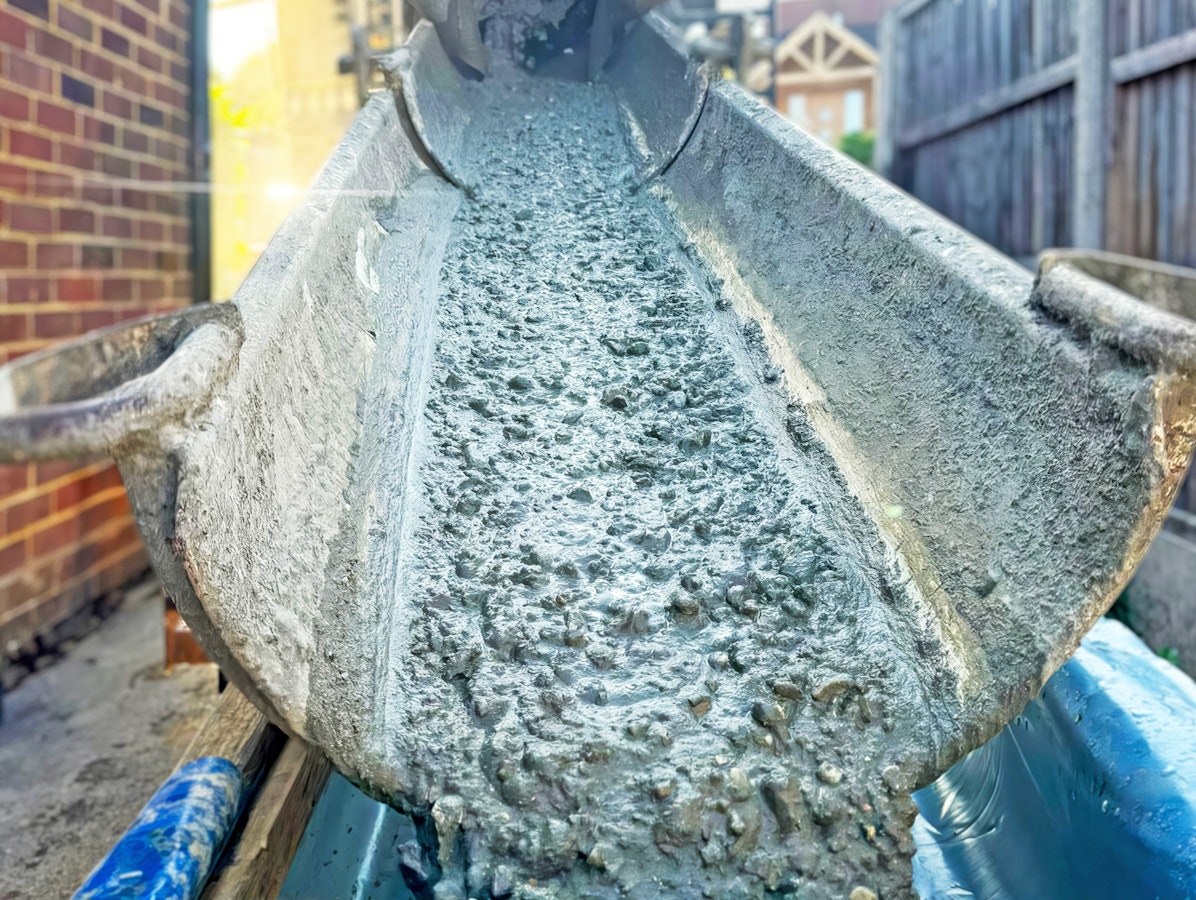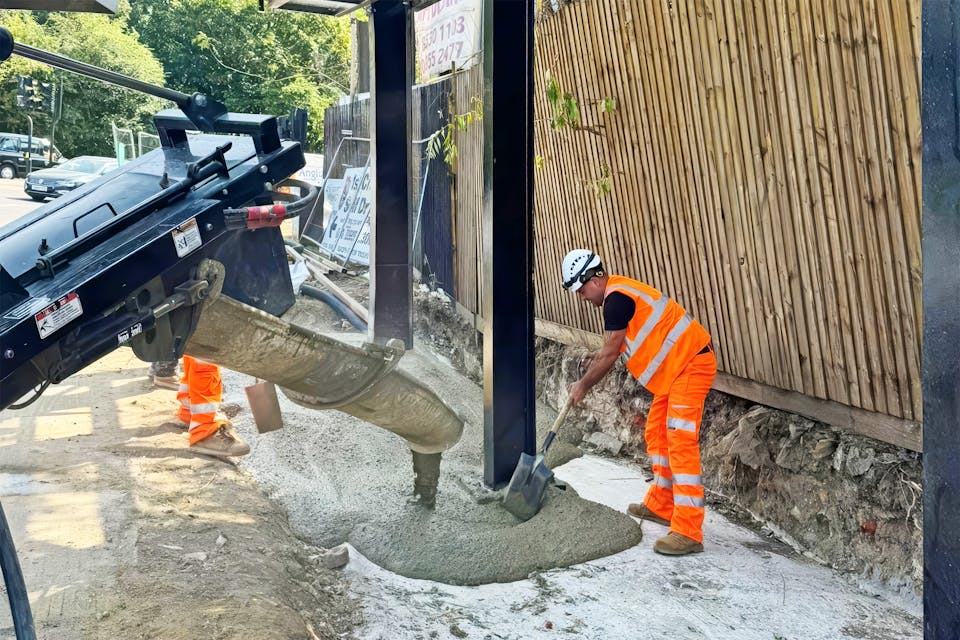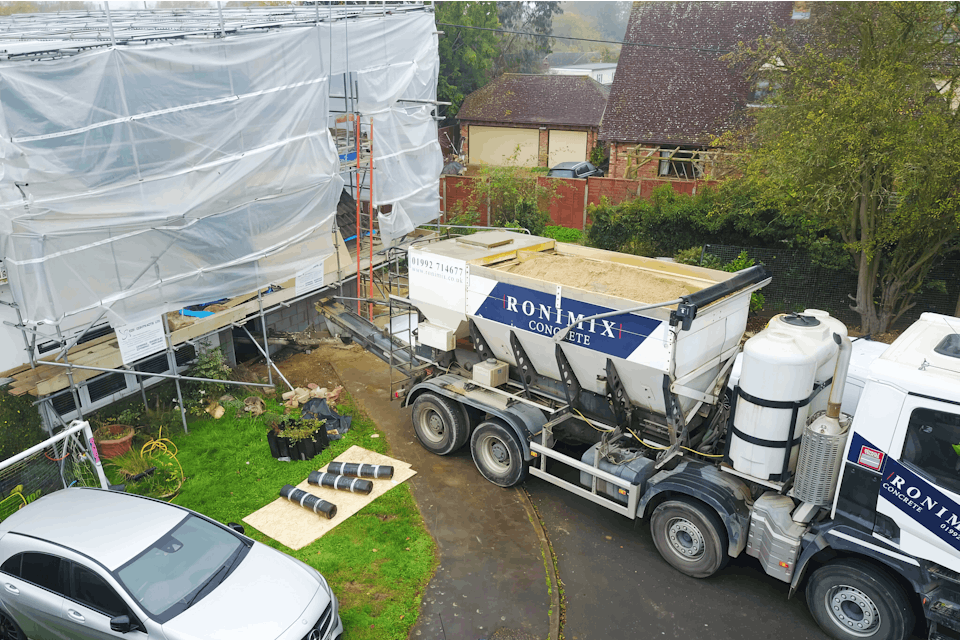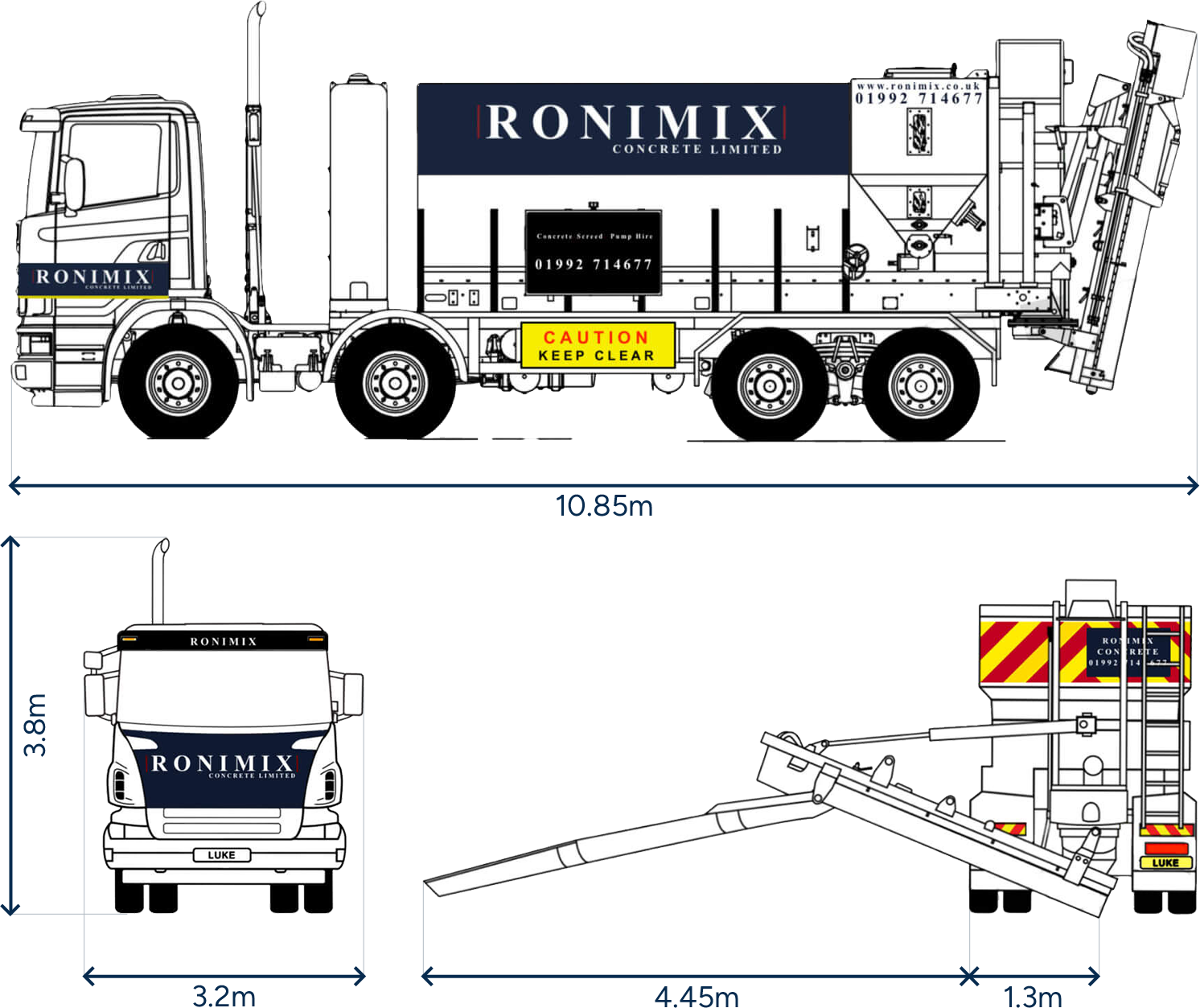- High quality concrete
- No extra or hidden charges
- Reliable expert team
- 2-hour arrival timeslot
- Free delivery
- Best value for money

High-quality volumetric concrete delivered to London and the East, batched and mixed on site.
Ronimix has a fleet of volumetric on-site concrete mixers ready to deliver our high-quality ready-mixed concrete where you need it.
Each one our volumetric concrete mixers carries concrete materials (20mm ballast, CEM1 (100%) cement and water) in separate compartments. This allows the concrete to be batched and mixed on site when we arrive. With a fully loaded lorry we can make up to 10m3 of fresh concrete.
Mixing on site means:
- The concrete is fresh and highly workable, allowing it to be deposited easily where you need it, either direct from the truck or using one of our concrete pumps (hired separately).
- There's no risk of over- or under-ordering. Your order volume is your estimated required amount, but you can use more/less. We only charge for the amount that leaves the mixer.
- You can tailor your mix to the site requirements at the exact time of concrete deposit.
Why customers choose Ronimix
-
On time,
every time -
Only pay for
what you use -
No mess,
no waste
Gallery


Ronimix came to my house last week and delivered my Concrete. They arrived on time and all the staff were polite and helpful. Highly recommend this company.
Need it fast?
Same/Next Day Delivery available at no extra charge if we can fit you in – enquire or call now.
Caution for everyone handling cementitious material
Fresh cementitious material can cause serious burns to skin and eyes as well as skin disease and dermatitis. DO NOT swallow. Keep out of reach of children. Immediately wash off any fresh cementitious material from skin and thoroughly wash out any affected eyes. If swallowed do not induce vomiting but seek immediate medical advice. Wear protective clothing (goggles, gloves, impervious boots, trousers and long sleeved clothing).
Immediately remove any clothing or other item saturated with cementitious material and wash thoroughly before reuse. Seek medical attention if symptoms persist or in case of doubt.
MAKE SURE EVERYONE HANDLING OR COMING INTO CONTACT WITH FRESH CEMENTITIOUS MATERIAL RECEIVES THIS WARNING AND INFORMATION
